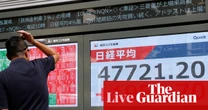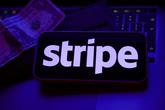U.S. consumer confidence rose to a six-month high in August amid optimism over the economic outlook, but Americans are becoming more anxious about the labor market after the unemployment rate jumped to near a three-year high of 4.3% last month.
The better-than-expected reading in consumer confidence, reported by the Conference Board on Tuesday, reflected improved perceptions of business conditions over the next six months, and the survey suggested the odds of a recession had continued to decline. Consumers’ uneasiness over the labor market is mirrored by concerns at the Federal Reserve, with Fed Chair Jerome Powell last Friday signaling interest rate cuts were imminent.
“This report supports a rate cut on both the decline in inflation expectations and a softening labor market, but is not so weak as to suggest a recession at this point,” said Conrad DeQuadros, senior economic adviser at Brean Capital.
The Conference Board’s consumer confidence index increased to 103.3 this month, the highest level since February, from an upwardly revised 101.9 in July.
Economists polled by Reuters had forecast the index would be little changed from the previously reported 100.3. Confidence was higher among consumers aged 35 years and older, and those with annual incomes above $100,000.
The cutoff date for the survey was August 21. The rise in confidence could have been influenced by President Joe Biden dropping out of the November presidential race and the nomination of Vice President Kamala Harris to head the Democratic Party ticket.
The Conference Board made no mention of any political impact. The University of Michigan this month, however, attributed the rise in its consumer sentiment measure in August to increased optimism among Democrats compared with Republicans.
Former President Donald Trump is the Republican Party candidate in the upcoming election.
The Conference Board’s Expectations Index, based on consumers’ short-term outlook for income, business, and labor market conditions, improved to 82.5. That was the highest level since August 2023 and was up from 81.1 in July. It was the second straight monthly reading above 80. A reading below 80 usually signals a recession ahead.
Consumers were less upbeat, however, about the labor market. The share of consumers who viewed jobs as “plentiful” slipped to 32.8% from 33.4% in July. Some 16.4% of consumers said jobs were “hard to get,” up from 16.3% last month.
The survey’s so-called labor market differential, derived from data on respondents’ views on whether jobs are plentiful or hard to get, fell to 16.4, the narrowest since March 2021, from 17.1 in July. This measure correlates to the unemployment rate in the Labor Department’s monthly employment report. The unemployment rate has risen for four straight months.
“While we wouldn’t necessarily use it to predict month-to-month changes in the unemployment rate, the fact that it keeps worsening is not a good development,” said Abiel Reinhart, an economist at JPMorgan, referring to the labor market differential. “The message here is that the July unemployment increase was not just a fluke.”
Stocks on Wall Street were little changed. The dollar fell against a basket of currencies. U.S. Treasury yields rose.
Rate cuts coming
Consumers’ 12-month inflation expectations dropped to 4.9%, the lowest level since March 2020, from 5.3% in July. Financial markets expect the U.S. central bank to kick off its easing cycle next month with a 25-basis-point rate reduction, though a half-percentage-point cut cannot be ruled out.
The Fed has maintained its benchmark overnight interest rate in the current 5.25%-5.50% range for more than a year, having raised the policy rate by 525 basis points in 2022 and 2023.
With job growth ebbing, consumers were more pessimistic on their income prospects over the next six months.
The share of consumers expecting their incomes to increase fell to 16.9% from 17.2% in July. The proportion anticipating a decline rose to 12.7% from 11.6% last month.
Rising worries about finances weighed on buying plans for the next six months. At face value that would suggest softer consumer spending in the months ahead, but there is not a strong correlation between confidence and spending.
“Politically driven shifts in sentiment tend to be poorly correlated with spending decisions,” said Oliver Allen, senior U.S. economist at Pantheon Macroeconomics.
Buying plans for motor vehicles fell as did those for major household appliances. The share of consumers intending to purchase a house was the smallest since early 2013.
Higher-mortgage rates and home prices have pushed the dream of owning a home out of the reach of many Americans.
But relief could be in sight as the reduced affordability has increased the supply of homes on the market, helping to curb house price inflation.
A separate report from the Federal Housing Finance Agency on Tuesday showed single-family home prices dipped 0.1% on a month-on-month basis in June after being unchanged in May. They increased 5.1% in the 12 months through June, the smallest year-on-year rise since July 2023, after advancing 5.9% in May.
New housing supply has surged to levels last seen in early 2008. The existing homes inventory has also risen to the highest level in nearly four years.
An outright decline in house prices is unlikely, however, in the absence of significant labor market deterioration.
“Annual home price growth is on track to slow to just above 3% by year end, and we expect it to stabilize around that pace,” said Nancy Vanden Houten, lead U.S. economist at Oxford Economics.
—Lucia Mutikani, Reuters









No comments